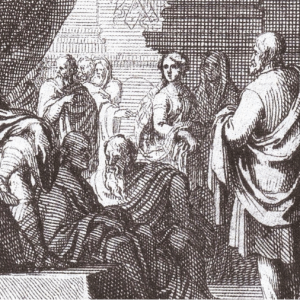Summary: The parallels of building architecture and information architecture came to life when client of TUG's was updating both their building and their website.
The Understanding Group often uses physical architecture as an analogy to describe what we do. We take inspiration from the principles of architecture first proposed by the famous Roman architect Vitruvius who said a structure should exhibit usefulness, strength, and beauty—qualities sometimes referred to as the Vitruvian triad. Many people find it intuitive to plan space with these qualities in mind, whether that space is physical or virtual.
In a pleasant coincidence, we had the opportunity to see these parallels come to life for a client who was embarking on a project to upgrade their infrastructure. The American Concrete Institute (ACI) engaged us to update the structure of their website, concrete.org, to meet today’s standards for user experience.
At the same time, they were upgrading their physical headquarters in Farmington Hills, Michigan. We were especially delighted when one of our very first meetings included a walk-through of their physical space by the building architect who gave his analysis of what was and wasn’t working with their physical space, articulating the problems, goals and how he intended to resolve them.
It was amazingly familiar.
When Information Architects Meet Building Architects
The building architect gave a broad evaluation that revealed the users’ experience of the building in ways that weren’t purely technical. It was about how the structure of the place creates meaningful impressions: “You walk in and see this. Does this communicate ACI’s brand to you?”
Then it was our turn. Our process also begins with discovery, a holistic approach where we spend time getting familiar with the site along with the people who use it and the goals it is meant to achieve. We described how approaching the construction of a website through the lens of architecture provides significant benefits:
People can find where they need to go and accomplish their goals when they get there so productivity and customer satisfaction go up—it’s useful.
The site scales over time as the taxonomy and navigation structures anticipate content growth and evolution—it’s strong.
Branding is clear and the values of the organization are inherent in the structure—done right, it’s beautiful.
As experts in the construction industry, our clients know architects and how they bring value in their “programming”, which is the process of developing and clarifying stakeholder intent. After hearing the same principles of architecture juxtaposed in two different contexts, Information Architecture made natural sense to them. Like good blueprints, good sitemaps come out of an understanding of what stakeholders have now and what they want. Then, with a plan in place, costly “construction” mistakes can be avoided. The result is a virtual place that people want to visit over and over again.
We wrote up a case study about our work for the American Concrete Institute if you’re interested in reading about it.

